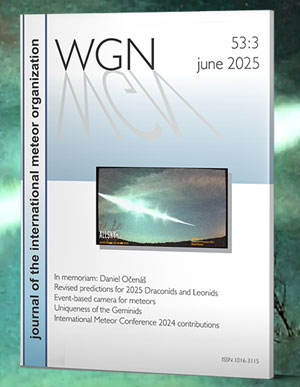Alastair McBeath writes in the 2011 Shower Calendar: The most recent perihelion passage of the Leonids’ parent comet, 55P/Tempel-Tuttle, in 1998 may be more than a decade ago now, but the shower’s activity has continued to be fascinatingly variable from year to year recently. This year might produce enhanced rates (though these may be observable using only particularly sensitive radio and radar systems), and theoretical work has suggested there may be several peaks. – The activity graph below is updated every 15 minutes – click for details.

Jérémie Vaubaillon has indicated part of the 1800 AD dust trail may be encountered around 22h36m UT on November 16, and could produce ZHRs of ∼ 200. Unfortunately, the dust particles involved are expected to be exceptionally small, of order 10–100 microns, and this could mean no optically-detectable meteors at all. This activity may be observable instead as an increase in underdense radio meteor echoes, by those systems capable of recording the equivalent of such ‘invisibly-faint’ meteors, and by sensitive radar meteor systems. Mikhail Maslov has proposed that there may be two peaks, one on November 17, around 21h UT, when ZHRs may be ∼ 5–10 above the underlying ‘normal’ activity, the second on November 18 near 23h UT, with ZHRs of ∼ 10 above normal. Taking the typical ZHR to be ∼ 10–15 could suggest ZHRs at either might be ∼ 20 ± 5. The second peak he noted may produce somewhat fainter than average meteors, however. Another potential maximum time is that given above for the nodal crossing, when ZHRs are liable to be simply ‘normal’.




 You saw something bright and fast? Like a huge shooting star? Report it: it may be a fireball.
You saw something bright and fast? Like a huge shooting star? Report it: it may be a fireball.  You counted meteors last night? Share your results with us!
You counted meteors last night? Share your results with us!  You took a photo of a meteor or fireball? You have a screenshot of your cam? Share it with us!
You took a photo of a meteor or fireball? You have a screenshot of your cam? Share it with us!  You caught a meteor or fireball on video? Share your video with us!
You caught a meteor or fireball on video? Share your video with us!